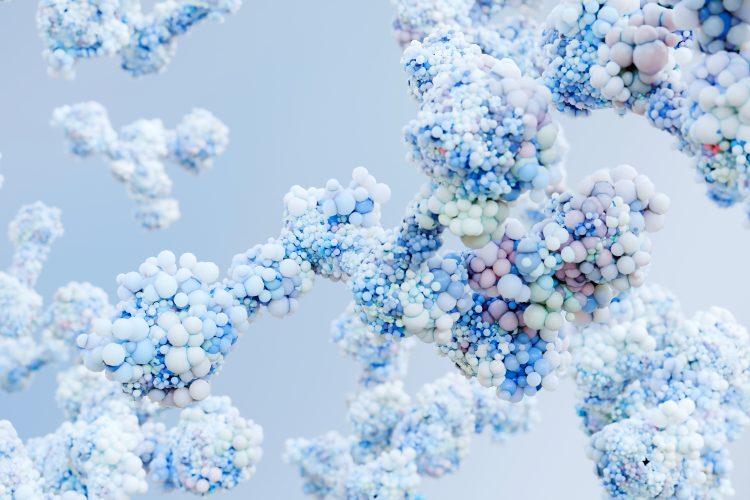A novel class of drug candidates for neurodegenerative diseases
Posted: 11 September 2024 | Dr Andrea Pfeifer (AC Immune) | No comments yet
At AAIC 2024, AC Immune unveiled a new class of antibody drug conjugates, called morADC (Morphomer® antibody drug conjugate). In this Q&A, CEO of AC Immune, Andrea Pfeifer, discusses how morADC uses the capabilities of the company’s two discovery platforms to combine two highly selective molecules, resulting in drug candidates with higher potency.


How does morADC technology combine the properties of small molecules and monoclonal antibodies to enhance anti-aggregation effects for CNS applications?
The technology combines two highly selective molecules, each of which was individually designed to target and disrupt pathological forms of proteins (ie proteinopathies), like Abeta, Tau or a-synuclein (a-syn). The morADC are able to cross the blood-brain barrier more efficiently and offer higher potency than individual parent molecules. The new ADC technology was created by bringing together AC Immune’s proprietary discovery platforms for biologics and small molecules (dubbed SupraAntigen® and Morphomer®, respectively). The resulting novel class of therapeutic candidates it generates show synergistic properties.
Preclinical data have shown that morADC are capable of interacting with validated proteinopathies implicated in neurodegeneration, including Abeta, Tau and a-syn. morDAC enable single or dual-targeting strategies that deliver a combination therapy in a single therapeutic agent and have significantly enhanced anti-aggregation effects compared to the parental molecules alone. The conjugation of brain-penetrant proprietary small molecules with a monoclonal antibody can multiply antibody brain exposure in comparison to the parent antibody alone.
These data, showing new functionality, indicate morADC have the potential for first- and best-in-class efficacy against multiple therapeutic targets involved in neurodegenerative diseases, including Alzheimer’s and Parkinson’s diseases. We see this as important progress in our aim to achieve precision prevention for neurodegenerative diseases.
Biomarkers aren’t just supporting drug discovery – they’re driving it
FREE market report
From smarter trials to faster insights, this report unpacks the science, strategy and real-world impact behind the next generation of precision therapies.
What you’ll unlock:
- How biomarkers are guiding dose selection and early efficacy decisions in complex trials
- Why multi-omics, liquid biopsy and digital tools are redefining the discovery process
- What makes lab data regulatory-ready and why alignment matters from day one
Explore how biomarkers are shaping early drug development
Access the full report – it’s free!
What specific advantages do morADC offer in terms of blood-brain barrier penetration and potency, compared to existing treatments?
Data from preclinical studies have shown that conjugating the right small molecule – meaning one that it is both brain penetrant and specific for the target – to a monoclonal antibody targeting a defined proteinopathy, enables better penetration of the antibody across the blood-brain barrier and higher potency against the target.
As the blood-brain barrier is a significant obstacle to many therapeutically active agents, the data certainly suggests a significant advantage with morADC.
How do the single-targeting morADC, targeting the same protein with both an antibody and a small molecule, compare to dual-targeting morADC that address two different targets such as Abeta and Tau?
morADC have been tested for single targeting, with the antibody and the small molecule targeting the same protein, and dual targeting, for example an anti-Abeta monoclonal antibody combined with an anti-Tau Morphomer small molecule, to deliver combination therapy in a single therapeutic agent.
The single-targeting morADC shows significant synergistic anti-aggregation effects compared to the parental molecules, and dual-targeting morADC, for example against Abeta and Tau, were reported at AAIC to demonstrate several times higher anti-aggregation effects in vitro compared to the parental molecules.
Neurodegenerative diseases generally develop slowly over many years and remain difficult to accurately diagnose, particularly early on. As a result, we are still working to fully understand their development, including the precise roles played over time by misformed species of different proteins such as Abeta and Tau. This complex nature of neurodegeneration means that being able to provide a dual targeted therapy in this way could be a significant advantage in treatment.
What are the major challenges you anticipate in the development of morADC therapies for neurodegenerative diseases, and how are you planning to address these?
These are still early days in the development of morADC – we are at least a couple years from entering clinical trials. These molecules must go through the usual optimisation and preclinical toxicity hurdles before being tested in humans. We have learned a lot about these therapeutic targets (Abeta, Tau and a-syn) through our work on developing antibodies, active immunotherapies and small molecules against these targets over the past two decades. So, we are confident that we can manage the complexity of dual targeting morADCs in this milieu and progress development efficiently. Indeed, the data so far are highly compelling and the potential is clear.
The bottom line is that morADC have all the hallmarks of potential first- and best-in-class efficacy against multiple high value therapeutic targets, and we are actively exploring this potential.
Can you share any insights into future plans for the morADC pipeline?
We have now gained a strong understanding of how to engineer morADC, collected proof-of-concept data in vitro and have quantified the improvements in brain penetrance in vivo. We are planning to start in vivo experiments in models of neurodegenerative disease in the near future, and will be able to go into more detail about development plans once we have reached that point.
About the author
Andrea Pfeifer, CEO of AC Immune


Dr Pfeifer holds a PhD in Toxicology (Cancer Research) from the University of Würzburg, Germany and is a registered Toxicologist and Pharmacist.
Related topics
Antibodies, Drug Development, In Vivo, Monoclonal Antibody, Neurosciences, Small molecule, Technology
Related conditions
Alzheimer's disease (AD), Neurodegenerative diseases, Parkinson's disease (PD)
Related organisations
AC Immune
Related people
Dr Andrea Pfeifer (AC Immune)








